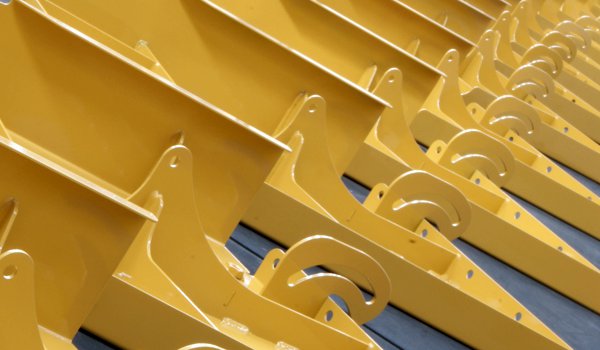
Powder coating is commonly used in the manufacture of metal products and fabrications. Sheet metal fabricator Hydram operates four dedicated paint plants, and you can find out more information about how the sheet metal powder coating process works below.

Powder coating is based on the principle that objects with opposite electric charges (positive and negative) attract one another. Powder particles are negatively charged by passing them through a special spraying gun. This results in an electric field between the spray gun and the earthed component. The powder particles then follow the field lines and adhere to the product.

The component is then conveyed to an oven where the powder is baked at temperature of 160 to 200 degrees C for approximately 20 minutes. Most conducting or thermally stable materials are suitable for powder coating and metals are particularly good due to their high electrical and thermal conductivity. Complex metal components can be powder coated evenly with excellent adhesion.

All products are cleaned and treated prior to powder coating to ensure correct adhesion. Hydram’s latest conveyor paint line (new in 2015) uses a five-stage pre-treatment system using the Oxsilan process from Chemetall:
Components are then dried at a temperature of between 100 and 120 degrees C before the powder is applied.

Different types of powder are used depending on the service conditions of the component:
The three factors you need to consider when choosing the type of powder are:
Many different colours, textures and special effect powders are available to create the desired finish. All the powders used by Hydram Sheet Metalwork are Lead Free.

Powder coating is environmentally cleaner than wet paint alternatives, with no solvents used or volitile organic compounds released, and the possibility of over 90% powder utilisation when using powder reclaim systems.
Powder coating can also provide a higher quality finish at a lower overall cost than wet painting, with higher processing efficiciency (throughput) and lower overall energy requirements.